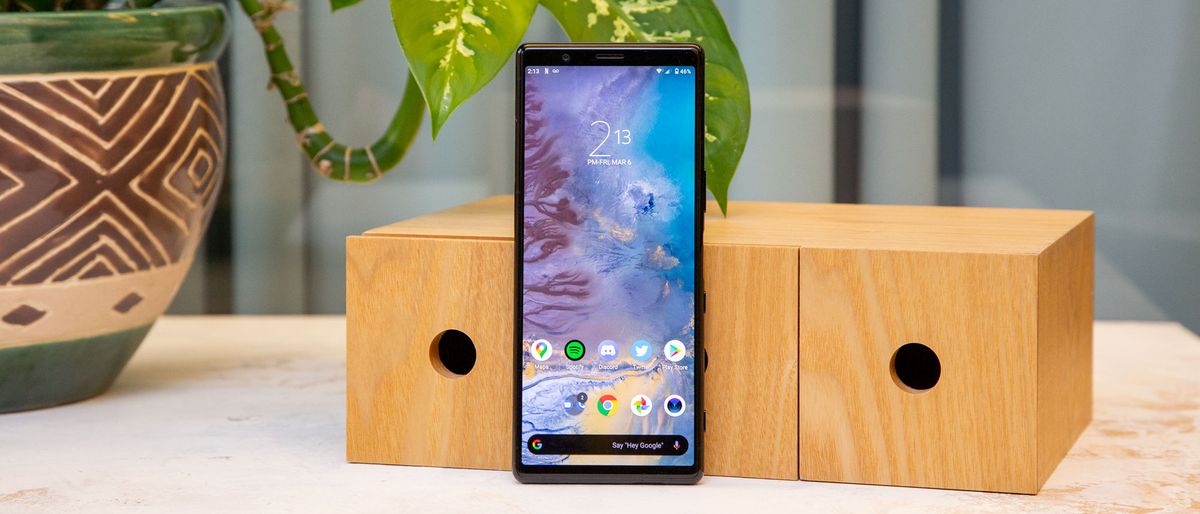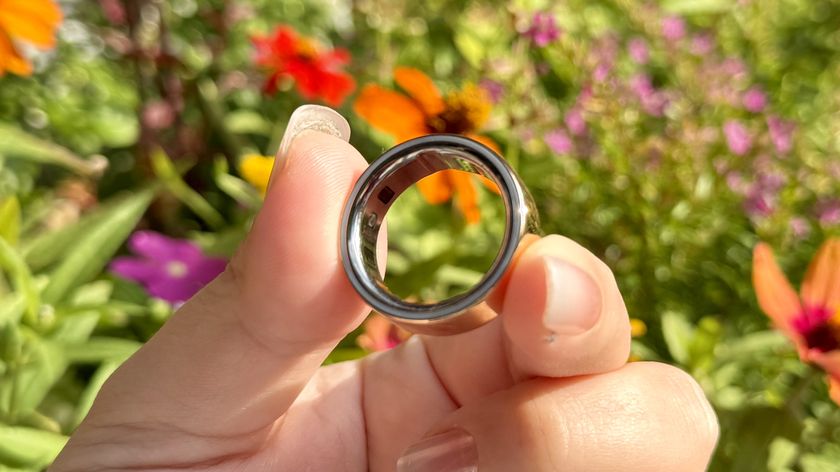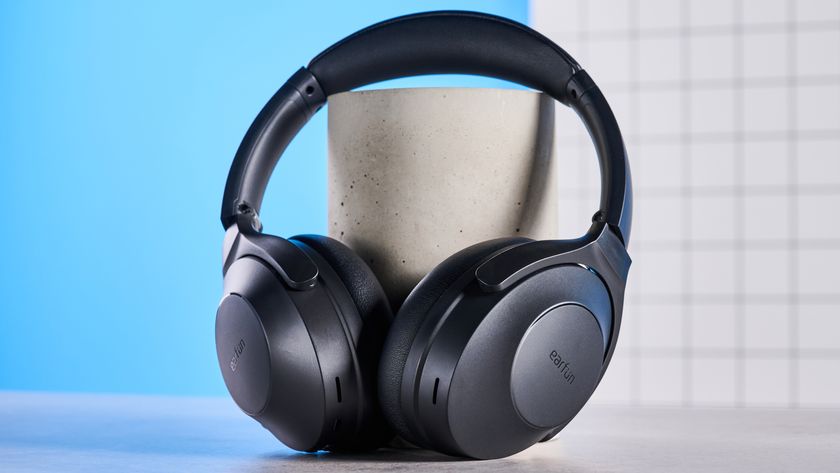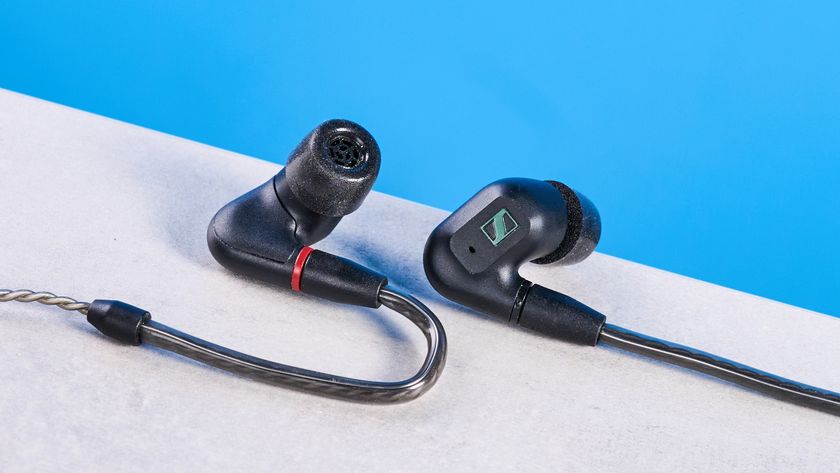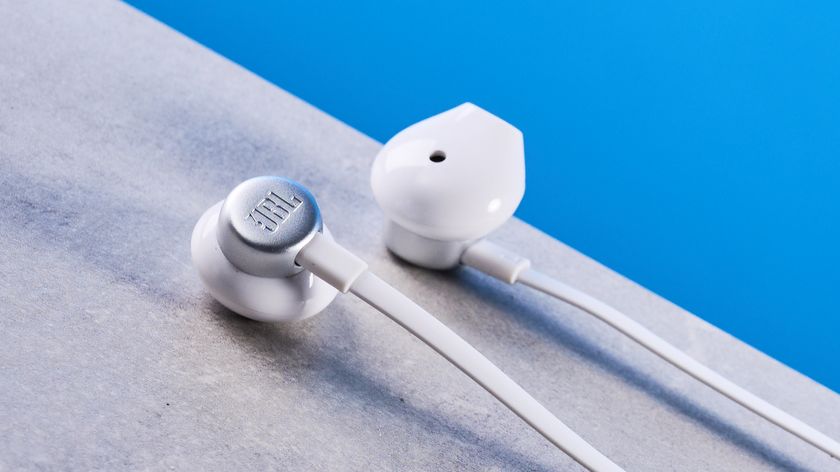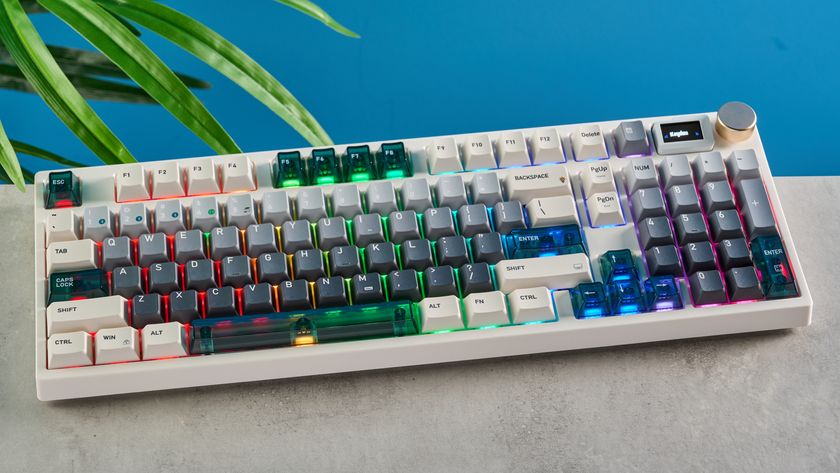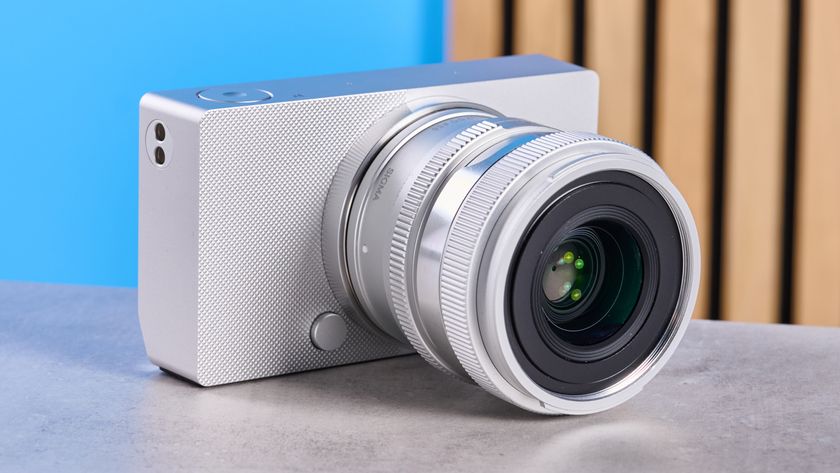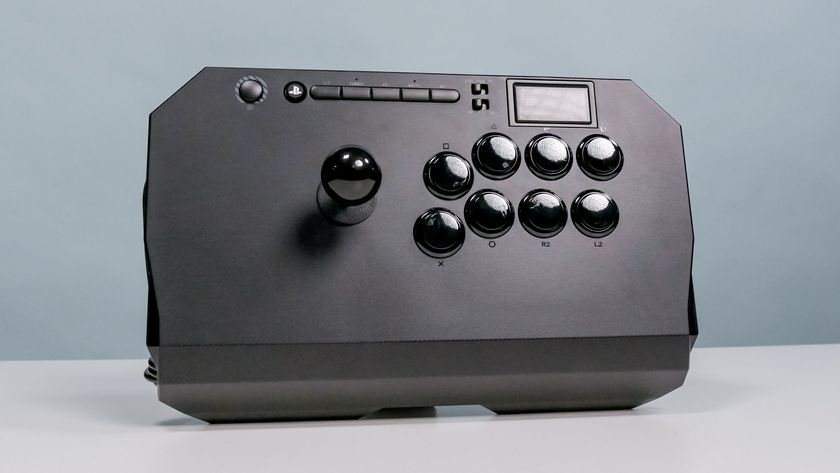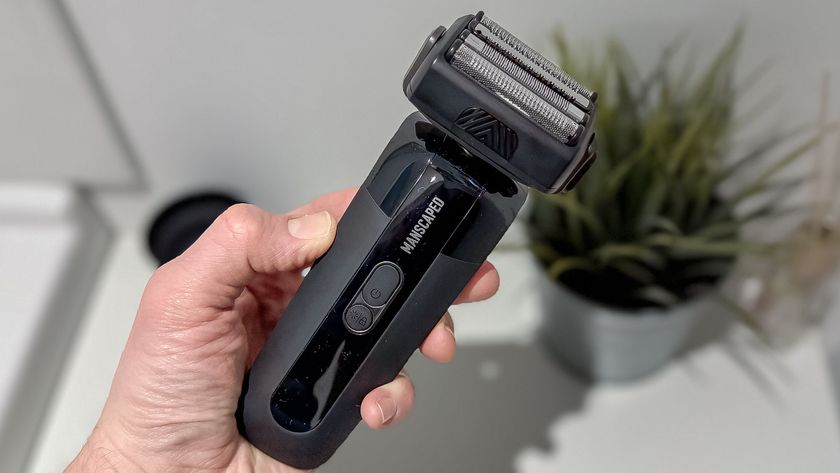Tom's Guide Verdict
The Sony Xperia 5 is an elegantly designed, reasonably priced flagship phone, but quirky ergonomics, frustrating cameras and a lacking feature set makes it a poor alternative to the likes of the Samsung Galaxy S20 and iPhone 11.
Pros
- +
Elegant design
- +
Reasonable price
- +
21:9 aspect ratio is useful
- +
Supports most networks unlocked
Cons
- -
Frustrating ergonomics
- -
Underwhelming triple cameras
- -
Dim display
- -
Unimaginative software
- -
No wireless charging
Why you can trust Tom's Guide
Price: $799
Display (resolution): 6.1-inch OLED (2520x1080)
Rear cameras: Triple: 12MP primary (ƒ/1.6); 12MP telephoto (ƒ/2.4); 12MP ultrawide (ƒ/2.4)
Front camera: 8MP (ƒ/2.0)
CPU: Qualcomm Snapdragon 855
RAM: 6GB
Storage: 128GB
microSD slot? Yes; up to 512GB
Battery: 3,140 mAh
Battery life: 9:12
Size: 6.22 x 2.68 x 0.32 inches
Weight: 5.78 ounces
You know it's a sign of the times when $799 begins to sound like a reasonable price for a flagship smartphone. With premium Android handsets like the Samsung Galaxy S20 creeping well past the four-digit mark, $799 for Sony’s triple-camera, Snapdragon 855-toting Xperia 5 is a refreshing proposition.
In fact, it's a proposition that gets even sweeter once you consider that the Xperia 5 is essentially a more compact version of Sony's Xperia 1, with the same three 12-megapixel rear lenses, speedy processor, generous RAM and storage and up-to-date Android 10 software.
The only difference is that the Xperia 5 stuffs all that into a 6.1-inch body, rather than a 6.5-inch one. It also skips the Xperia 1's battery-draining 4K OLED panel for a lower-resolution, though still-adequate, 1080p one, with the same cinematic 21:9 aspect ratio.
That all sounds good on paper. And yet, there's still this nagging sense that something is missing with the Xperia 5. Whether it's the mediocre cameras and battery life, Sony's half-baked software ideas or quirky ergonomics, our Sony Xperia 5 review reveals a serviceable high-end handset that fails to make a meaningful impression, and falls shy of landing on our list of the best Android phones.
Sony Xperia 5: Price and availability
The Sony Xperia 5 is available from retailers such as Amazon and Best Buy for $799. It's also unlocked and compatible with all American carriers, including CDMA networks like Verizon's. Right now, Amazon has the best deal going for the Xperia 5, having slashed the price by $100.
There's only one configuration of the Xperia 5 on offer in the U.S., and it comes equipped with 6GB of RAM and 128GB of storage. You can choose to expand that by another 512GB with the use of a microSD card if you're wanting for more space.
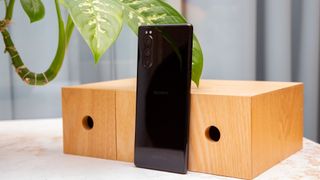
Sony Xperia 5: Design
Sony remains committed to the extra tall (or extra wide, if you're watching video) 21:9 aspect ratio with the Xperia 5. If it was a bit shorter, the handset would certainly qualify as a small phone. However, the device's slender proportions mean reaching that upper left or right corner with your thumb will be a daunting challenge for most, even though the bezels aren't that large on this 6.1-inch device.
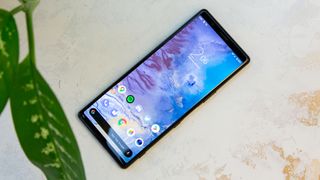
Still, when watching the right TV show or movie, or scrolling through your preferred social media app of choice, the aspect ratio occasionally proves its worth. It's not a transformative experience or anything, though it benefits some uses more than others. Playing games built to accommodate the width of the display is a more comfortable experience, for example, because your thumbs obscure less of the action. And anything filmed at 21:9 obviously wins out.
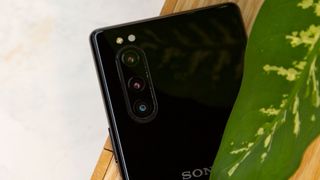
The aspect ratio, then, isn't my lasting issue with the Sony Xperia 5's design. Rather, it's the awkward ergonomics. This is a cleanly styled, classy handset in the way Sony hardware often is, but it's plagued by some head-scratching choices.
First, it's a magnificently slippery phone, with its flat glass black (which strangely does not allow for wireless charging) and rounded sides. Second, every one of the Xperia 5's buttons is lined down the right side, and there are too many of them. Sony is once again relying on a side-mounted capacitive fingerprint sensor here, but it doesn't double as the power key. Instead, that's nestled below the scanner, while the volume rocker is above it. There's also a two-stage camera button all the way near the bottom-right corner.
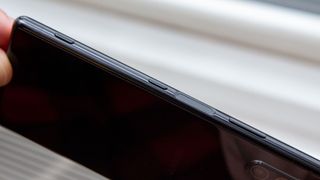
In my first few days with the Sony Xperia 5, this strange placement of switches resulted in an endlessly repeating comedy of errors. The side of my thumb would brush up against the sensor as I removed the phone from my pocket, which would register as several incorrect scans. Then I'd be locked out of using my fingerprint to authenticate, and forced to input a PIN code instead. And when I wanted to stop using the Xperia 5, I'd instinctively press volume down every time rather than the power button, before awkwardly curling my thumb down to reach the correct key.
There must be some good reason why Sony couldn't simply embed sleep/wake functionality inside the scanner like every other phone maker that's mounted its sensor on the side, yet here we are. Truthfully, though, I don't really care what the excuse is. When so many companies have moved onto facial recognition or in-screen optical or ultrasonic sensors, the fact Sony is still falling short in this regard isn't funny anymore, just depressing.
Sony Xperia 5: Display
In typical Sony fashion, there is a lot of branding surrounding the Xperia's 6.1-inch full-HD+ OLED display. It has that aforementioned 21:9 aspect ratio, which in Sony parlance makes it a CinemaWide panel. It boasts HDR support via Sony's Bravia X1 for Mobile engine, and features something called Creator Mode — which according to the company allows users to "watch movies as the creators intended."
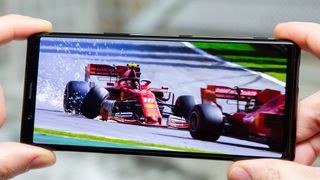
Watching Season 2 of Netflix's Formula 1 Drive to Survive, I personally couldn't speak to whether the sparks, tire smoke and metallic carbon-fiber chassis looked quite how the documentarians wanted them to. That said, everything did look rich, vibrant and captivating on the default display profile, and the extra-wide aspect ratio did make things a bit more immersive, even if the show was made for 16:9 screens.
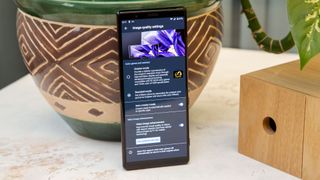
But when I switched to Creator Mode, I was disappointed with how excessively warm it made all on-screen content. It's reminiscent of the "film" or "theater" settings on most TVs, like a light sepia filter that tints everything, or one of those eye-care settings designed to cut down on blue light, so the display is softer on your eyes.
Creator Mode also makes everything look dimmer, which isn't helpful because the Xperia 5's display doesn't get very bright to begin with. The phone's peak full-screen brightness tops out at 318 nits — almost a third as bright as the Samsung Galaxy S20's 857 nits, and still far behind the 752-nit iPhone 11 Pro.
Additionally, the Xperia 5's 105.3% coverage of the DCI-P3 color space is distant from the Galaxy S20’s 162.5%. That translates to colors that are more tempered and arguably more realistic on Sony's panel, but not as eye-catching and saturated as those on the Samsung device.
Sony Xperia 5: Camera
Like the iPhone 11 Pro, the Xperia 5 incorporates a triple 12-megapixel rear camera, split between wide-angle, ultrawide-angle and telephoto lenses. Unlike the iPhone 11 Pro, the photos it takes are often hit and miss.
As with most flagship phones, the flaws in the Xperia 5's approach to imaging don't reveal themselves in broad daylight. This scene, captured on a sunny day in a suburb outside London, looks absolutely serviceable through the Xperia 5's wide-angle shooter. The Pixel 4's rendition seems generally brighter in the shadows — something visible in the blue barriers on the right of the frame, and the brick building on the left — but the difference isn't all that significant.
However, indoors or at night — really anytime light is less plentiful — things begin to suffer. This Totoro plush, captured using the shallow depth-of-field bokeh mode on each device, looks tragic through the Xperia 5's telephoto lens. If you look closely, the individual fibers blend together in multicolor waves, which is quite poor for a flagship phone with a high-grade Sony image sensor and optics. The green stem of the leaf Totoro is holding is strangely blurry as well.
And it only got much worse when I snapped a portrait of my colleague Henry in the Tom's Guide office. Everything about Henry's face is washed out, over-brightened and almost out of focus compared with the same shot as captured by Google's flagship. It's a shockingly poor showing.
And what about those night shots? Well, inexplicably, Sony's camera software does not provide a manual night mode. That's really hard to believe when practically every handset from every other phone maker is doing that these days, but indeed, the only time the Xperia 5 will only optimize exposure for night shots is when its auto mode deems it necessary.
Then again, looking at the example of a night shot above, you begin to wish Sony never bothered with a night mode to begin with. The image I captured here was so staggeringly washed-out and beige and blurry that I took it several times and tapped around the display to adjust metering just to correct for user error — and none of that seemed to make a difference.
But then sometimes, the Xperia 5 can surprise you, like it did here with this lovely shot of a Glasgow courtyard at night. Sony's software really homes in on those lights drizzled above the buildings, pumping those up and pulling out some warmth from the buildings encircling the grounds. The version of this scene captured on the Pixel 4 is arguably more realistic — and also a bit better at illuminating those darkest areas — but you could certainly make the case that the Xperia 5's shot is prettier and more Instagram-worthy.
The Xperia 5's 8-MP front-facing camera is pretty average, delivering splotchy, flat shots like the selfie you see above that over-brighten shadows and pepper the frame with a fair degree of noise. And the sensor's small megapixel count doesn't help sharpen things, either.
Sony Xperia 5: Performance
The Xperia 5 comes fitted with Qualcomm's flagship Snapdragon 855 processor and 6GB of RAM. However, high-end Android phones nowadays, beginning with the Galaxy S20, are now touting the latest Snapdragon 865 silicon. That puts Sony's hardware at a bit of a disadvantage.
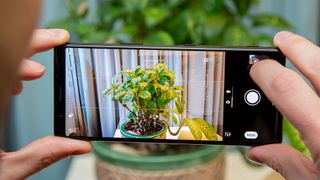
Granted, it's not a massive one. The Snapdragon 855 is still plenty fast, and ensures the Xperia 5 is on similar footing as last year's Galaxy S10, OnePlus 7T and many other devices. It's just not the most powerful Android phone you can buy today.
The benchmarks put this into perspective. The Xperia 5 achieved a multicore Geekbench 5 score of 2,711 points — some 400 points behind the Galaxy S20 (3,147) and nearly 800 points behind the A13 Bionic-powered iPhone 11 Pro (3,509), indicating inferior overall performance. Meanwhile, in the GFXBench Aztec Ruins Vulkan graphics test, the Xperia 5 notched 1,052 frames at 16 frames per second — again a long way behind Apple’s most powerful iPhone, which recorded 2,174 frames at 34 fps.
The gulf in numbers may sound profound, but the Xperia 5 is still a strong performer overall, and powerful enough to handle demanding titles like Fortnite and Asphalt 9. There was some choppiness running the former at the highest graphics fidelity setting the game allows — and the Xperia 5 did get toasty in the process — but that's more or less consistent with the experience on other flagships that utilize the same CPU.
Sony Xperia 5: Battery life
The 3,140-mAh battery inside the Sony Xperia 5 isn't particularly large among premium phones these days. Then again, this phone doesn't have a massive display or 5G connectivity, so the relatively small capacity is somewhat excusable.
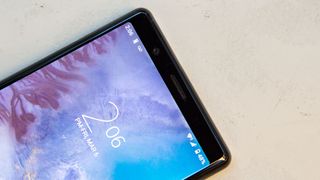
And so it tracks that the Xperia 5's longevity on a charge isn't Earth-shattering, though it could certainly be worse. Sony's phone lasted 9 hours and 12 minutes in Tom's Guide's custom battery test, where devices endlessly reload webpages over a T-Mobile LTE connection until their batteries run dry.
How does that compare with other top handsets? Google's Pixel 4, which has a 5.7-inch panel and the same processor, lasted 8 hours and 3 minutes in the same test. The 5G-enabled Galaxy S20 endured 9 hours and 21 minutes, but uses a 4,000-mAh battery. And the iPhone 11 Pro lasted 10 hours and 24 minutes — and its battery is about the same size as the one in the Xperia.
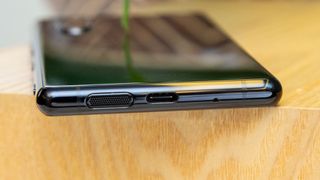
Charging speeds are relatively quick, but not lightning fast, as the Xperia 5 makes it to about 53% from empty after 30 minutes when using the stock USB PD adapter. Unfortunately, however, the phone doesn't support wireless charging — something that's quite surprising, given its glass sandwich design and the fact most of its premium contemporaries these days provide the feature.
Sony Xperia 5: Software
The Sony Xperia 5 launched with Android 9 Pie software on board, but can now be upgraded to Android 10. The latest version of Google's mobile OS has a few improvements surrounding location access, notification controls and sharing content — but for the most part, it's a relatively iterative release.
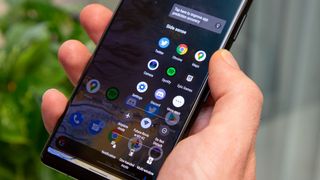
Sony's Android skin, to its credit, adds a lot of functionality that doesn't come baked into Android by default, like Sony's exclusive Stamina battery-saving mode. Unfortunately, though, most of those extras aren't particularly useful.
Side Sense is one such feature — a strip of shortcuts and customizable commands that surface when you double-tap the edge of the phone's display. Side Sense has been a staple of Xperia devices for a while now, and it's not a terrible idea, but it's never been intuitive to activate and that's unfortunately the case on the Xperia 5 as well. In fact, the vast majority of the situations in which I launched Side Sense happened accidentally, when the side of my palm brushed against the top of the phone's frame.
Dynamic Vibration, another odd feature that sounds gimmicky in theory but is even worse in practice, activates the phone's vibration motor in tandem with sound playing while you're listening to music or watching a video. This too is something you'll probably want to keep off — especially when you set the phone down on a table, so it doesn't vibrate itself off the ledge into an untimely demise.
Sony Xperia 5: Verdict
With the Xperia 5, Sony has once again built a phone that is serviceable in most respects, though you'd have a hard time recommending it over other options.
The Samsung Galaxy S20 is a bit more expensive, but better in practically every way — especially in its display, performance and camera quality. The OnePlus 7T (which will likely soon be replaced by a new model, the rumored OnePlus 8) costs hundreds less than the Xperia 5, but offers performance that is on a par with Sony's handset, if not better; plus, OnePlus' Oxygen OS software is superior, too. And Apple's range of iPhones beats out the Xperia 5 where battery life is concerned.
That's not to say the Sony Xperia 5 doesn't have its advantages: You can find it for as low as $699 from some retailers, its industrial design is really tasteful in that classically Sony way, and it's a good unlocked option to bring to the carrier of your choice. But those highlights are buried by, oh, so many quirks — quirks the bulk of other high-end smartphones don't have, and they're better for it.
Adam Ismail is a staff writer at Jalopnik and previously worked on Tom's Guide covering smartphones, car tech and gaming. His love for all things mobile began with the original Motorola Droid; since then he’s owned a variety of Android and iOS-powered handsets, refusing to stay loyal to one platform. His work has also appeared on Digital Trends and GTPlanet. When he’s not fiddling with the latest devices, he’s at an indie pop show, recording a podcast or playing Sega Dreamcast.
